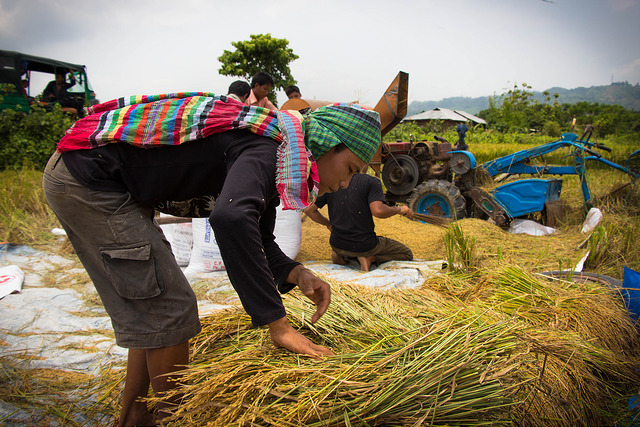Recent developments in donor nations have called into question the benefits of foreign aid. Why send tax dollars to foreign countries when there is suffering at home? One compelling reason is that foreign aid plays a key role in ending hunger and malnutrition — thereby saving lives, increasing global stability, and providing win-win economic benefits for donor and recipient nations. Simply put, aid is an investment with high social and economic returns. Donor nations should continue to invest in aid to work toward a world that is healthier, wealthier, and safer for all.
Why is aid a good investment? Firstly, aid has proven to save many lives. For much of the middle of the 20th century, widespread famine beset many countries in Asia and Africa, and the prospect of feeding growing populations seemed out-of-reach. Migrants fled places like Ethiopia and the Sahel in hopes of a better life for themselves and their children. Donors responded with investment: The Green Revolution, funded by private entities such as the Rockefeller Foundation and public agencies such as the U.S. Agency for International Development (USAID), relied on the transfer of technology and high-yield seeds and unleashed incredible gains in crop yields that staved off the threat of starvation in South and Southeast Asia. A recent estimate suggests that without a Green Revolution, about 30 million children would have died in the developing world between 1970 and 2000. The Green Revolution shows that aid — with the right mix of policy and technology — can make huge improvements in global food security.
Secondly, aid as investment in food security can improve national security, as hunger is both a consequence and driver of violent conflict. The 2007–2008 global food crisis — in which global prices for staple crops skyrocketed in just a few months — sparked rioting in 48 countries. However, research shows that building stronger food systems increases resilience to conflict. Strengthening food systems through investments in, for example, agricultural R&D, information and communication technologies (ICTs), and post-harvest technologies and infrastructure can improve livelihoods, food security, and nutrition. Strengthened food systems can also create more work opportunities, especially for young people, thus reducing the motivation to participate in conflict.
In this way, aid can help address the issue of migration: It can promote long-term development that improves living conditions for those that would otherwise migrate. Investments that support productive safety nets, such as cash or food transfers combined with access to wealth-building assets, contribute to providing predictable income and profitable opportunities. When complemented with provision of adequate basic services and strengthening productive sectors, household and national resilience to shocks and conflicts can be strengthened. These long-term solutions to problems of countries experiencing conflict and out-migration require sustained development assistance.
Thirdly, aid as investment creates win-win outcomes for the economies of both the developing and the developed world. By creating economic opportunities through new markets for donor nations’ goods and services, aid can contribute to economic growth in donor and recipient nations. Studies have shown that short term and long term aid both provide benefits to world markets that dwarf their cost. Each dollar increase in short-term aid raises local output by more than a dollar and a half, while the same dollar invested in agriculture research increases a country’s imports by more than four dollars, increasing demand for the type of high-quality goods and services produced by economies like the United States or Germany.
Can donor nations afford it? Despite the wide-ranging benefits of investing in foreign aid, some people have the impression that it is an expense their countries cannot afford. Yet it amounts to no more than around one percent of the national budget in the United States and less than one percent of the gross national income of the United Kingdom. Moreover, malnutrition is costly — the world loses $3.5 trillion annually due to productivity losses and health care costs related to malnutrition. That’s 26 times what the world spent on Overseas Development Assistance in 2015 ($131.6 billion). Yet investing in nutrition has great returns. For example, every dollar invested in childhood nutrition programs and interventions yields around 16 dollars in return. Investments in crop improvement research return around 9 dollars for each dollar invested. Instead of making deep cuts to foreign aid, countries should engage in reviews to ensure that the programs and organizations they fund get a big bang for their buck.
Of course, foreign aid alone will not achieve global food security and improved nutrition. Country-led policies, institutions, and investments are also critical. These mechanisms are all necessary and must work in concert to effectively end the staggering levels of hunger and malnutrition we see today. Currently, 795 million people still suffer from hunger and 2 billion people lack basic nutrients. While a world without hunger is within reach, we all must play our role to achieve it.
Many world leaders have long acknowledged the benefits of investing in aid to end hunger and malnutrition: it saves lives, promotes greater global security, and expands markets for donor nations. New administrations should weigh these benefits against the relatively small costs of foreign aid. It’s one of the best investments they can make.
Shenggen Fan is IFPRI’s Director General.







